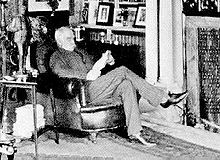
Stanmore is part of the London Borough of Harrow in Greater London. It is centred 11 miles (18 km) northwest of Charing Cross, lies on the outskirts of the London urban area and includes Stanmore Hill, one of the highest points of London, at 152 metres (499 ft) high. The district, which developed from the ancient Middlesex parishes of Great and Little Stanmore, lies immediately west of Roman Watling Street and forms the eastern part of the modern London Borough of Harrow.

Harrow Weald is a suburban district in Greater London, England. Located about 2 miles (3.2 km) north of Harrow, Harrow Weald is formed from a leafy 1930s suburban development along with ancient woodland of Harrow Weald Common. It forms part of the London Borough of Harrow.

Cyril Francis Maude was an English actor-manager.

Soho Square is a garden square in Soho, London, hosting since 1954 a de facto public park let by the Soho Square Garden Committee to Westminster City Council. It was originally called King Square after Charles II, and a much weathered statue of the monarch has stood in the square, with an extended interruption, since 1661, one year after the restoration of the monarchy.

Grim's Ditch, Grim's Dyke or Grim's Bank is a name shared by a number of prehistoric bank and ditch linear earthworks across England. They are of different dates and may have had different functions.

His Excellency is a two-act comic opera with a libretto by W. S. Gilbert and music by F. Osmond Carr. The piece concerns a practical-joking governor whose pranks threaten to make everyone miserable, until the Prince Regent kindly foils the governor's plans. Towards the end of the Gilbert and Sullivan partnership, Arthur Sullivan declined to write the music for this piece after Gilbert insisted on casting his protege, Nancy McIntosh, in the lead role; Sullivan and producer Richard D'Oyly Carte, proprietor of the Savoy Theatre, did not feel that McIntosh was adequate.

Grim's Ditch or Grim's Dyke or Grimes Dike is a linear earthwork in the London Borough of Harrow, in the historic county of Middlesex, and lends its name to the gentle escarpment it crowns, marking Hertfordshire's border. Thought to have been built by the Catuvellauni tribe as a defence against the Romans, it extended east–west about 6 miles (9.7 km) from the edge of Stanmore where an elevated neighbourhood of London, Stanmore Hill, adjoins Bushey Heath to the far north of Pinner Green – Cuckoo Hill. Today the remaining earthworks start mid-way at Harrow Weald Common.
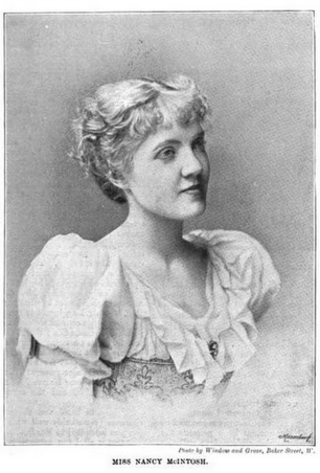
Nancy Isobel McIntosh was an American-born singer and actress who performed mostly on the London stage. Her father was a member of the South Fork Fishing and Hunting Club, which had been blamed in connection with the 1889 Johnstown Flood that resulted in the loss of over 2,200 lives in Johnstown, Pennsylvania.

Sir William Schwenck Gilbert was an English dramatist, librettist, poet and illustrator best known for his collaboration with composer Arthur Sullivan, which produced fourteen comic operas. The most famous of these include H.M.S. Pinafore, The Pirates of Penzance and one of the most frequently performed works in the history of musical theatre, The Mikado. The popularity of these works was supported for over a century by year-round performances of them, in Britain and abroad, by the repertory company that Gilbert, Sullivan and their producer Richard D'Oyly Carte founded, the D'Oyly Carte Opera Company. These Savoy operas are still frequently performed in the English-speaking world and beyond.
Futtocks End is a British comedy short film released in 1970, directed by Bob Kellett and starring Ronnie Barker, Michael Hordern, Roger Livesey and Julian Orchard. It was written by Barker. Almost entirely without dialogue, the film includes a musical score, sound effects and incoherent mutterings. The story revolves around a weekend gathering at the decaying country home of the eccentric and lewd Sir Giles Futtock and the series of saucy mishaps between the staff and his guests.

Metro-land is a BBC documentary film written and narrated by the Poet Laureate of the United Kingdom, Sir John Betjeman. The film was directed by Edward Mirzoeff, and first broadcast on 26 February 1973. The film celebrates suburban life in the area to the northwest of London that grew up in the early 20th century around the Metropolitan Railway (MR), later the Metropolitan line of the London Underground.
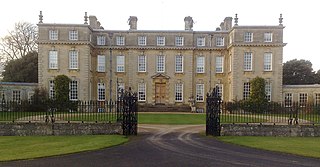
Ditchley Park is a country house near Charlbury in Oxfordshire, England. The estate was once the site of a Roman villa. Later it became a royal hunting ground, and then the property of Sir Henry Lee of Ditchley. The 2nd Earl of Lichfield built the present house, designed by James Gibbs, in 1722. In 1933, the house was bought by an MP, Ronald Tree, whose wife Nancy Lancaster redecorated it in partnership with Sibyl Colefax. During the Second World War Winston Churchill used the house as a weekend retreat, due to concerns that his official country house, Chequers and his private country home, Chartwell, were vulnerable to enemy attack. After the war, Tree sold the house and estate to the 7th Earl of Wilton, who then sold it in 1953 to Sir David Wills of the Wills tobacco family. Wills established the Ditchley Foundation for the promotion of international relations and subsequently donated the house to the governing trust.

Bentley Priory is an eighteenth to nineteenth century stately home and deer park in Stanmore on the northern edge of the Greater London area in the London Borough of Harrow.

William Burr McIntosh was an American lecturer, photographer, film studio owner, silent film actor, author, publisher of TheBurr McIntosh Monthly, reporter and a pioneer in the early film and radio business.
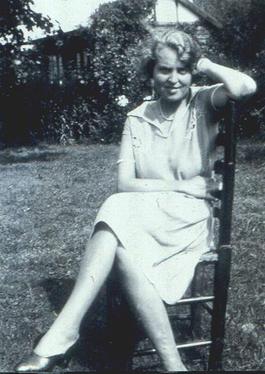
Patricia Preece, Lady Spencer, born Ruby Vivian Preece, was an English artist, associated with the Bloomsbury Group, and the second wife of painter Stanley Spencer, for whom she modelled. It was later discovered that nearly all of the artwork exhibited and sold by Preece was painted by her lifelong lover, Dorothy Hepworth.
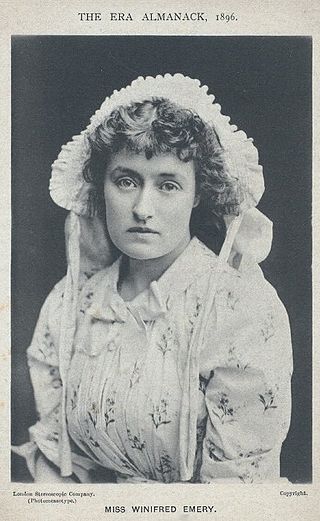
Winifred Emery was an English actress and actor-manager of the late 19th and early 20th centuries. She was the wife of the actor Cyril Maude.

Harrow Weald Common is an 18-hectare area of woodland, heath and pasture in Harrow Weald in the London Borough of Harrow. It is considered of considerable importance for wildlife, and it was formerly part of the Stanmore and Harrow Weald Commons and Bentley Priory Site of Special Scientific Interest, but in 1987 the boundaries of the SSSI were revised to exclude the Common. It has been designated by the Mayor of London as a Site of Metropolitan Importance for Nature Conservation.
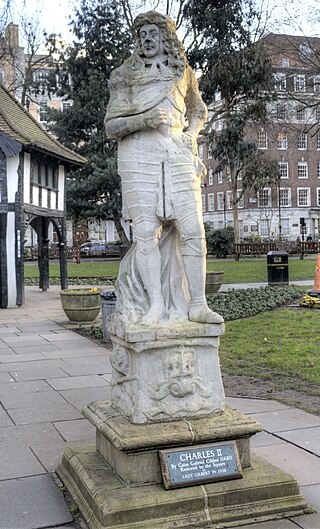
The statue of Charles II is an outdoor sculpture of Charles II of England by the Danish sculptor Caius Gabriel Cibber, located near the centre of Soho Square in London. Once part of a late 17th century fountain, it was removed in the late 19th century to a private estate in Harrow before being restored to the square in the mid-20th century. It depicts the king in a standing pose on top of a low decorated pedestal. Although it has been the subject of restoration works, it is heavily eroded and in a poor condition.




